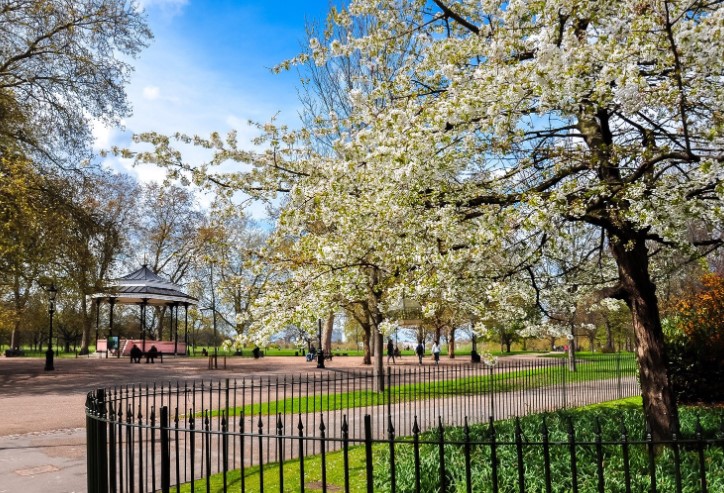
by Kanimozhi BV | Mar 4, 2025 | Garden, Exterior
Scarifying is a crucial part of maintaining a healthy, lush lawn. By removing thatch, moss, and dead grass, scarifying improves airflow, allowing nutrients and water to reach the soil more effectively.
However, after scarifying, your lawn can look bare and thin, which is why overseeding is essential to restore its density.
But the big question is: “How long after scarifying should I overseed?” Timing is crucial to make sure that successful grass seed germination, long-term lawn health.
In this guide, I’ll explain the best waiting period before overseeding, how to prepare your lawn, and essential aftercare tips to help your lawn recover beautifully.
What Is Scarifying and Why Does Your Lawn Need It?
What Is Lawn Scarifying?
Scarifying is the process of removing built-up thatch, getting rid of moss, and debris from your lawn using a scarifier or verticutter. It creates space for new grass to grow by improving air circulation, water absorption, and nutrient uptake.
Why Is Scarifying Important?
If your lawn feels spongy or has yellowing patches, poor drainage, or excessive moss to remove, scarifying can help by:
- Preventing thatch buildup, which blocks water and nutrients.
- Encouraging stronger, deeper grass roots.
- Enhancing lawn density and overall health.
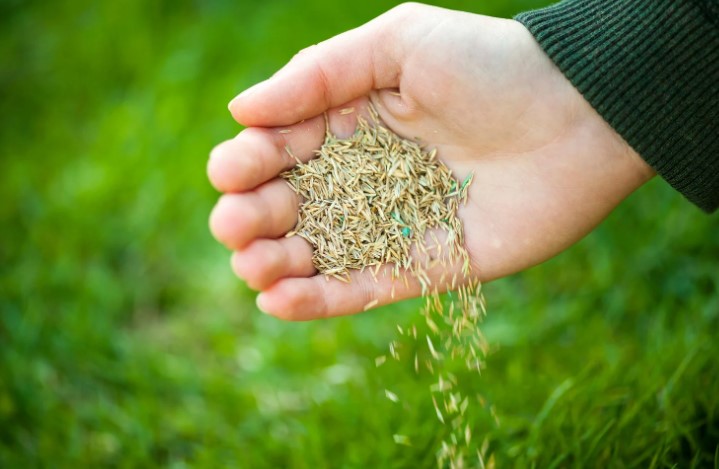
How Long After Scarifying Should I Overseed? – How Soon Can I Do?
You shouldn’t overseed immediately after scarifying because the lawn needs some recovery time. Generally, you should wait 3 to 7 days before overseeding, depending on the weather, lawn condition, and soil moisture levels.
What are the Factors Affecting the Timing of Overseeding?
- Weather Conditions: In the UK, mild temperatures (10-18°C) with some moisture are ideal for overseeding.
- Lawn Condition: If the lawn is heavily damaged, allow a few extra days for recovery.
- Soil Moisture: Ensure the soil is slightly moist but not overly wet before spreading new seeds.
What is the Risk of Overseeding Too Soon?
If you overseed immediately, the seeds may fail to establish properly due to soil disturbance. Giving your lawn a few days to settle ensures better seed-to-soil contact and successful germination.
When is the Best Time of Year to Scarify and Overseed in the UK?
Timing plays a vital role in lawn renovation success. The best seasons for scarifying and overseeding in the UK are:
| Season |
Pros |
Cons |
| Autumn (September-October) |
Warm soil, consistent rainfall, minimal weed competition |
Shorter growing period before winter |
| Spring (March-April) |
Warmer temperatures, rapid seed germination |
Risk of dry spells, more weed competition |
Why Autumn Is Best for overseeding?
Autumn provides the ideal conditions for overseeding after scarifying, as the soil is warm, there’s natural moisture, and weeds are less aggressive.
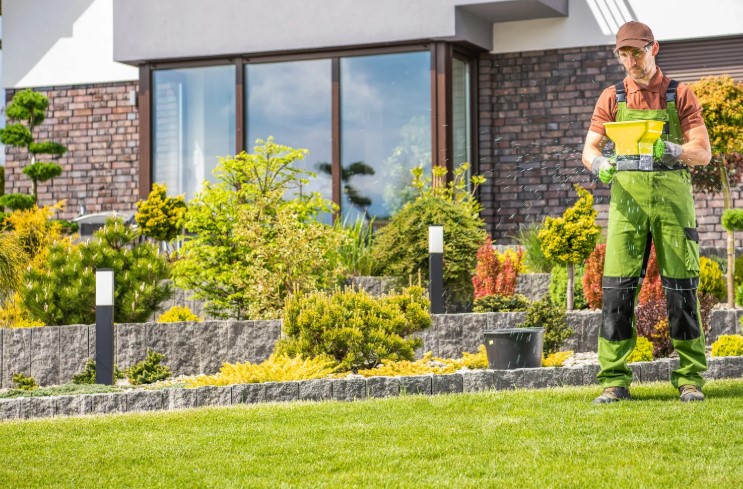
How to Prepare Your Lawn for Overseeding After Scarifying?
To maximise seed germination, proper preparation is key. Here’s what I do before overseeding:
- Clear Debris – Remove any remaining thatch or moss with a rake.
- Loosen the Soil – Lightly aerate the lawn to improve seed-to-soil contact.
- Choose the Right Grass Seed – Use a UK climate-friendly mix, such as ryegrass for hard-wearing lawns or fescues for shady areas.
- Fertilise (Optional) – Apply a low-nitrogen pre-seeding fertiliser to support new seed growth.
What is the Step-by-Step Guide to Overseeding After Scarifying?
Overseeding correctly ensures healthy, even grass growth. Here’s my step-by-step process:
- Water the Lawn Lightly – Moist soil helps seeds settle in better.
- Spread the Grass Seed Evenly – Use a seed spreader or hand-sow for small areas.
- Rake the Seeds In – Lightly rake the surface to cover the seeds with a thin layer of soil.
- Firm the Soil – Gently press down the seeds using a roller or by walking over them.
- Water Regularly – Keep the soil consistently moist, especially during the first 2–3 weeks.
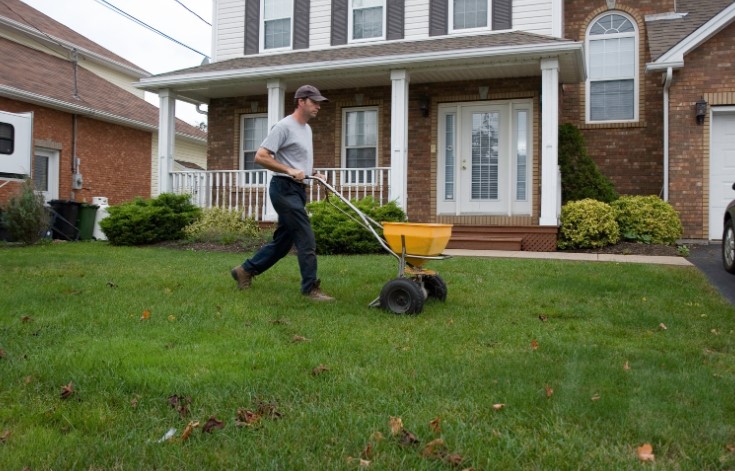
What are Common Mistakes to Avoid When Overseeding After Scarifying?
Even with the right process, some mistakes can reduce seed germination rates. Here are a few pitfalls to avoid:
- Overseeding Too Soon – Waiting 3-7 days allows the soil to settle for better seed growth.
- Using the Wrong Grass Seed – Choose a variety suitable for your lawn type and climate.
- Not Keeping Soil Moist – Seeds need constant moisture to sprout.
- Skipping Aftercare – Fertilisation and proper mowing help new grass thrive.
How Long Before I See Results from Overseeding?
The time it takes to see results depends on the type of grass seed and growing conditions.
| Grass Type |
Germination Time |
| Ryegrass |
5-10 days |
| Fescues |
7-14 days |
| Bentgrass |
10-14 days |
What are Key Factors Affecting Growth?
- Soil Temperature – Ideal range is 10-18°C.
- Watering – Keep soil moist but not waterlogged.
- Mowing Lawn – Avoid mowing until new grass reaches 5-7 cm.
Conclusion
Scarifying helps rejuvenate your lawn, but overseeding ensures it grows back thicker and healthier. The key takeaway is to wait 3-7 days before overseeding, allowing the soil to settle for optimal seed germination.
By following the step-by-step overseeding guide, choosing the right grass seed, and avoiding common mistakes, you’ll achieve a lush, green lawn ready to thrive! 🌱
Final Tip:
Regular lawn maintenance, including aeration, watering, and seasonal fertilisation, will keep your lawn in top condition for years to come.
What are the FAQs About How Long After Scarifying Should I Overseed?
No, it’s best to wait 3-7 days for the soil to settle.
2. Should I Fertilise Before or After Overseeding?
Use a pre-seeding fertiliser before sowing, and a low-nitrogen fertiliser after germination.
3. What If It Rains Heavily After Overseeding?
Light rain is beneficial, but heavy rain can wash away seeds. If rain is forecasted, delay overseeding.
4. How Soon Can I Mow After Overseeding?
Wait until new grass reaches 5-7 cm before mowing on a high setting.
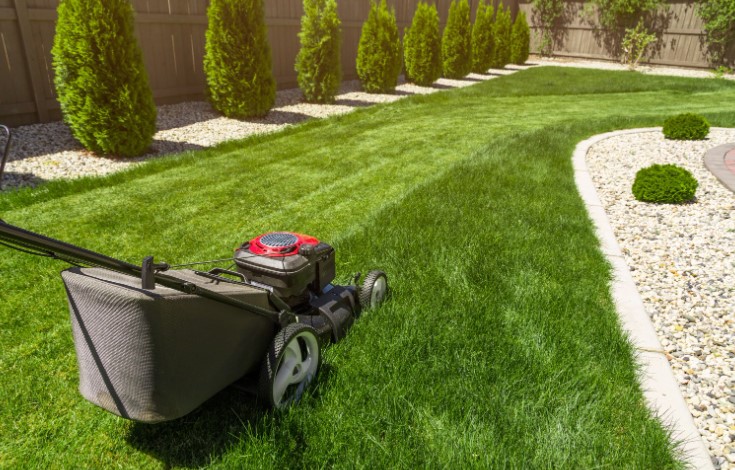
by Kanimozhi BV | Mar 3, 2025 | Garden, Exterior
Scarifying is an essential lawn care process that removes thatch, moss, and dead grass, allowing for healthier growth. However, after scarifying, many homeowners notice their lawn looking thin, patchy, or even bare in some areas.
If you’re wondering how to revive a lawn after scarifying, this guide will take you through the necessary steps to restore a lush, green lawn.
Whether you’ve removed too much grass, are unsure about watering, fertilising, or overseeding, or just want to avoid common mistakes, this guide covers everything you need to know.
What Happens to Your Lawn After Scarifying?
Scarifying can make a lawn look worse before it gets better. Here’s what typically happens after the process:
- Grass appears thinner – Scarifying removes dead material, but it can also pull out weak grass.
- Soil is exposed – Large patches of bare soil may appear where thatch was thick.
- Weeds and moss may try to grow – If not properly treated, weeds and moss can quickly return.
- Recovery time varies – Depending on the season, grass type, and lawn care, full recovery can take anywhere from 2 to 6 weeks.
If your lawn looks bare or unhealthy, don’t panic! With proper care, it can bounce back stronger.
No Grass Left After Scarifying – What Should You Do?
In some cases, scarifying may remove too much grass, leaving large bare patches or even an almost completely bald lawn. Here’s how to fix it:
1. Assess the Damage
- If more than 50% of the lawn is bare, it may need full overseeding.
- If only small patches are affected, spot reseeding should be enough.
2. Reseed or Start Fresh
| Lawn Condition |
Recommended Action |
| Some thin patches |
Overseed affected areas |
| More than 50% bare |
Full overseeding |
| Completely bald |
Consider starting fresh with new turf or seeding from scratch |
3. Improve Soil Health
- Apply a top dressing mix of compost and sand to nourish the soil.
- Aerate compacted soil in order to allow better air along with water penetration.
4. Follow a Strict Recovery Routine
- Water regularly but avoid overwatering.
- Use a good fertiliser to support new growth.
- Keep off the grass until it starts growing back.
With patience and the right care, even a completely bare lawn can regrow beautifully!
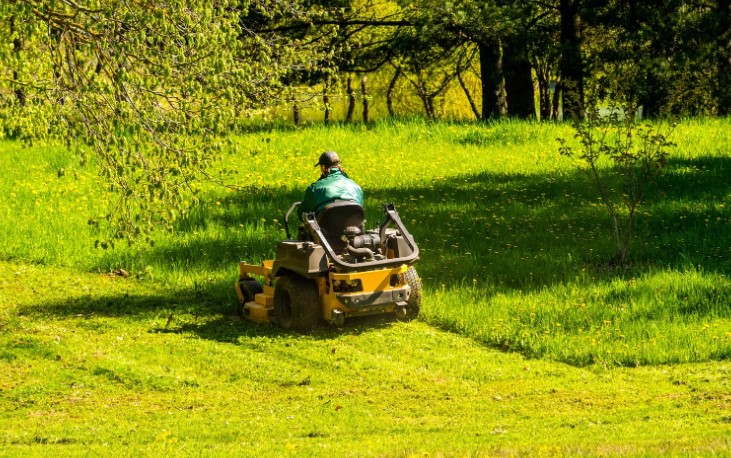
What To Do After Scarifying Lawn?
Once scarification is complete, the first 24-48 hours are crucial. Here’s what you should do:
- Remove any loose debris left from scarifying.
- Lightly water the lawn to reduce stress on the remaining grass.
- Avoid walking on the lawn too much.
First Week After Scarifying
- Overseed if needed to encourage new growth.
- Apply a high-phosphorus fertiliser for root development.
- Keep soil moist but not waterlogged.
Ongoing Maintenance (Weeks 2-6)
- Continue watering and fertilising as required.
- Mow only when new grass reaches about 7-8 cm in height.
- Watch for weeds and moss regrowth.

How To Revive a Lawn After Scarifying?
Should You Water the Lawn After Scarifying?
Yes! Proper watering is crucial after scarifying to help the lawn recover.
- Water lightly in the first 24 hours.
- For the first two weeks, water 2-3 times a week, depending on rainfall.
- Avoid overwatering, as it can lead to disease and moss growth.
When and How To Overseed a Scarified Lawn?
Overseeding helps fill in bare patches and encourages thicker growth.
- Best time to overseed: Early autumn or spring.
- Choose a high-quality grass seed suitable for the UK climate.
- How to overseed properly:
- Rake the soil lightly for better seed contact.
- Spread seed evenly at the recommended rate.
- Water immediately after seeding.
What Fertiliser Should You Use After Scarifying?
Applying fertiliser provides essential nutrients for recovery.
| Fertiliser Type |
Best For |
When to Apply |
| High-phosphorus (P) fertiliser |
Root development |
Immediately after scarifying |
| Nitrogen-rich fertiliser |
Encouraging growth |
2-3 weeks after scarifying |
| Slow-release fertiliser |
Long-term lawn health |
4-6 weeks after scarifying |
Should You Apply Top Dressing After Scarifying?
Top dressing helps improve soil quality and encourages new growth.
- Use a mix of sand, compost, and loam.
- Apply a thin layer (no more than 1 cm) evenly across the lawn.
- Brush it in to avoid smothering new grass.
How To Prevent Weeds and Moss From Returning?
After scarifying, moss and weeds can quickly take over. Prevent this by:
Common Mistakes To Avoid After Scarifying
- Mowing too soon – Wait until new grass is at least 7-8 cm tall.
- Over or under-watering – Keep soil moist, but not soaked.
- Using the wrong fertiliser – Avoid high-nitrogen fertilisers too soon.
How Long Does It Take for a Lawn To Recover After Scarifying?
Recovery time depends on several factors:
| Factor |
Impact on Recovery Time |
| Season |
Faster recovery in spring/autumn, slower in winter/summer |
| Grass Type |
Some varieties regrow faster |
| Watering & Feeding |
Proper care speeds up recovery |
| Soil Condition |
Healthy soil helps grass establish quicker |
Most lawns take 4-6 weeks to recover fully after scarifying.
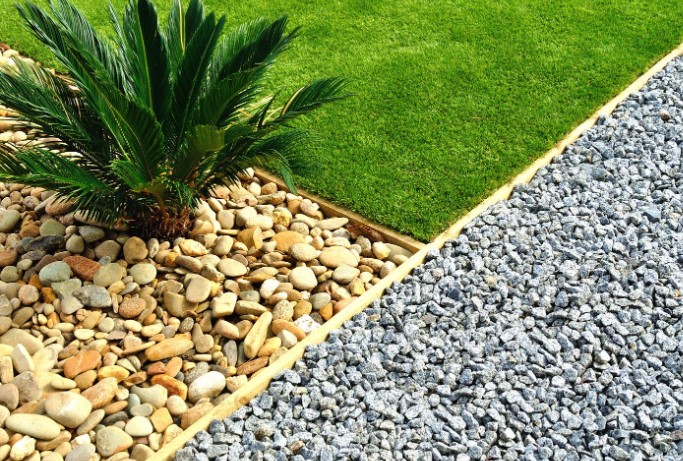
Final Tips for a Healthy Lawn Year-Round
- Scarify at the right time – Best done in autumn or spring.
- Feed your lawn regularly with a balanced fertiliser.
- Aerate and overseed annually for thicker grass.
- Mow at the correct height to prevent stress on the grass.
By following these tips, your lawn will stay lush, green, and healthy all year round!
Conclusion
Scarifying is essential for a healthy lawn, but it can leave your grass looking thin or even bare. The key to reviving a lawn after scarifying is proper watering, overseeding, fertilising, and regular maintenance.
If you follow the steps in this guide on how to revive a lawn after scarifying, your lawn will recover beautifully and be stronger than ever!
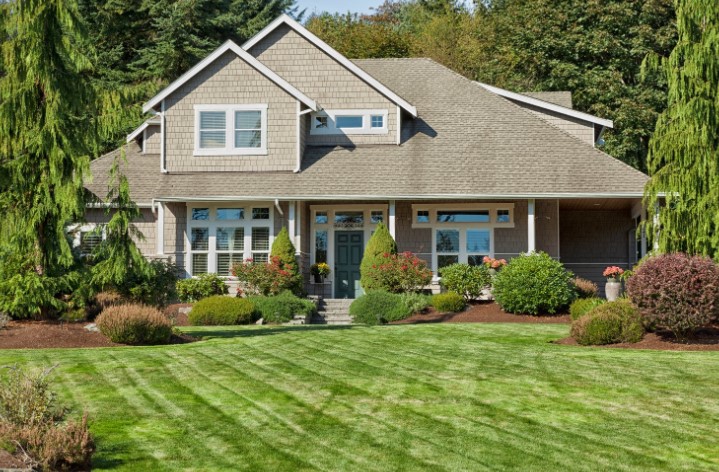
by Kanimozhi BV | Mar 3, 2025 | Garden, Exterior
Scarifying is an essential part of lawn care, helping to remove thatch and moss buildup. However, if done incorrectly or under the wrong conditions, it can leave your lawn looking bare and damaged.
If you’re wondering why there is no grass left after scarifying and how to fix it, this guide will walk you through the causes, recovery methods, and future prevention tips.
Why Is There No Grass Left After Scarifying?
If your lawn looks patchy, thin, or completely bare after scarifying, several factors could be responsible:
1. Excessive Thatch Removal
Scarifying too aggressively can strip away the upper layer of healthy grass along with the thatch. While removing thatch is beneficial, going too deep may leave the soil exposed and hinder regrowth.
2. Weak or Unhealthy Grass
If the lawn was already struggling due to poor maintenance, pests, or diseases, scarifying can worsen the damage. Weak grass struggles to recover, leading to bare patches instead of healthy regrowth.
3. Poor Soil Conditions
Compacted or nutrient-deficient soil can make it difficult for new grass to grow. If the soil is too hard or lacks organic matter, even reseeding might not be enough for proper regrowth.
4. Wrong Season for Scarifying
Scarifying in the wrong season can shock the grass and slow down recovery.
Ideally, it should be done in spring (March-April) or autumn (September-October) when temperatures are mild and conditions are optimal for growth. Hence should be conscious on when and how to scarify lawn.
5. Drought or Improper Watering
After scarifying, the lawn needs consistent moisture to encourage regrowth. If the lawn dries out or lacks adequate watering, new grass struggles to establish, leaving the lawn patchy.

How to Fix a Lawn with No Grass After Scarifying?
If scarifying has left your lawn looking worse than expected, follow these steps to restore it:
Assess the Lawn Condition
- Check if any healthy grass remains—if there are still patches, recovery will be easier.
- If the lawn is completely bare, you may need to reseed or lay new turf.
Improve Soil Quality
- Aerate the soil to improve drainage and allow roots to breathe.
- Top dress with a thin layer of compost or nutrient-rich soil to improve structure.
- Fertilise with a high-phosphorus fertiliser to encourage root development.
Overseeding the Lawn
- Choose high-quality grass seed suited for UK lawns (such as ryegrass or fescue blends).
- Evenly spread the seed and lightly rake it in to ensure good soil contact.
- The best time to overseed is in spring or autumn for optimal germination.
Watering and Aftercare
- Water daily for the first 10-14 days until the seeds establish.
- Gradually reduce watering but keep the soil moist during the initial growth phase.
- Protect the area from foot traffic, birds, and pets to allow new grass to grow.
How Long Does It Take for Grass to Come Back After Scarifying?
Lawn recovery time depends on several factors, but here’s a general timeline:
| Timeframe |
Lawn Recovery Progress |
| Day 1-7 |
Seeds absorb moisture, soil settles, initial root development starts. |
| Week 1-2 |
First signs of grass shoots appear. |
| Week 3-4 |
Grass starts to fill in, patches begin to blend. |
| Week 5-6 |
Lawn regains full coverage with consistent care. |
Factors like weather, soil condition, and seed type can influence this timeline, so patience and proper aftercare are essential.
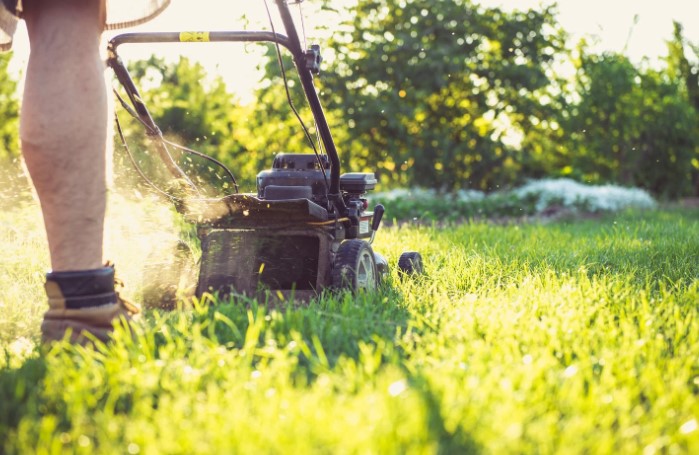
How NOT to Scarify Your Lawn?- Common Mistakes to Avoid
To prevent unnecessary damage, avoid these common scarifying mistakes:
Scarifying Too Deep
- Going too aggressive with scarifying can strip away healthy grass along with the thatch.
- Always adjust the depth settings to remove thatch without damaging the grass roots.
Scarifying at the Wrong Time
- Avoid scarifying in summer (too hot and dry) or winter (too cold and slow growth).
- The best seasons to scarify are spring and early autumn, when grass is actively growing.
Not Preparing the Lawn First
Skipping Aftercare
- Without fertiliser, overseeding, or watering, the lawn struggles to recover.
- Proper aftercare speeds up regrowth and prevents long-term damage.
Scarifying Too Often
- Scarifying once or twice a year is enough—overdoing it can weaken the grass.
- Monitor thatch buildup and only scarify when necessary.
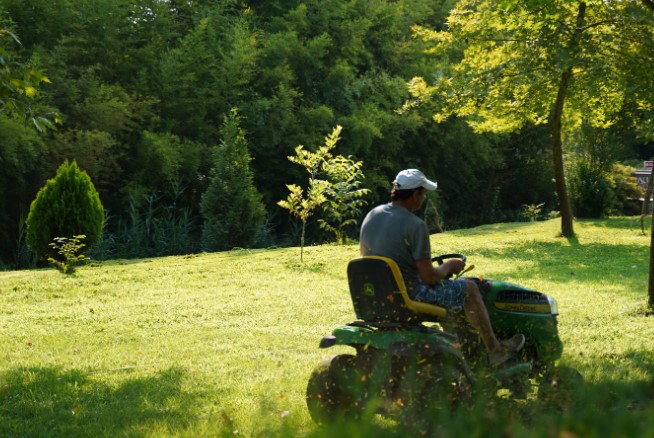
Preventing Lawn Damage from Scarifying in the Future
To ensure scarifying benefits your lawn instead of harming it, follow these tips:
- Scarify at the right time – Spring (March-April) or Autumn (September-October).
- Use the right tools – A manual rake for light scarifying, an electric/petrol scarifier for deeper work.
- Prepare the lawn properly – Mow first, remove debris, and slightly moisten the soil.
- Fertilise after scarifying – Use a balanced fertiliser to support regrowth.
- Overseed and water – Fill in bare patches with new grass seed and keep the soil moist.
Conclusion & Final Suggestion
Scarifying is essential for lawn health, but if not done correctly, it can leave your lawn looking bare and lifeless. The key to recovery is proper aftercare—ensuring the soil is healthy, overseeding where needed, and maintaining consistent watering.
Final suggestion: If your lawn is severely damaged, consider aerating and top-dressing before reseeding for the best results. With patience and the right steps, your lawn will come back greener and healthier in just a few weeks.
1. Should I fertilise my lawn after scarifying?
Yes, using a high-phosphorus or balanced fertiliser after scarifying helps promote root development and grass regrowth.
2. What is the best seed for repairing a UK lawn?
Ryegrass and fescue blends are ideal for UK weather, providing durability and fast growth.
3. Can I walk on my lawn after scarifying?
Avoid heavy foot traffic for at least 2 weeks to allow seeds to establish properly.
4. How do I know if my lawn needs scarifying?
If your lawn feels spongy underfoot or has excess thatch buildup (more than 1cm thick), it’s time to scarify.
5. What’s the difference between scarifying and aerating?
- Scarifying removes thatch and moss to prevent suffocation.
- Aerating loosens compacted soil for improved drainage and root growth.

by Kanimozhi BV | Feb 28, 2025 | Garden, DIY Ideas, Exterior
Lawn scarification is a crucial practice for maintaining a healthy and vibrant lawn. Over time, thatch and moss accumulate on the surface, forming a dense layer that restricts air, water, and nutrients from reaching the soil. If left unchecked, this buildup can weaken the grass, encourage disease, and promote moss growth.
Scarifying is the process of removing this thatch layer, allowing the grass to breathe and grow more effectively. However, timing is critical—scarifying at the wrong time can do more harm than good. This guide will explain:
- What lawn scarification is and why it’s important.
- When to scarify lawn in the UK.
- How often should scarification be done?
- Which tools are best for the job?
By following the correct scarification techniques and timing, you can promote healthier, greener grass and improve your lawn’s overall appearance.
What is Lawn Scarification and Why is It Important?
Lawn scarification is the process of removing organic debris such as thatch, moss, and dead grass from the surface of the lawn. This is done using a scarifier or rake, which pulls up the unwanted material, improving airflow and allowing nutrients to penetrate the soil.
Over time, lawns naturally accumulate thatch—a dense layer of dead plant material. While a small amount of thatch (less than 1cm) is beneficial, too much can cause:
- Poor water drainage, leading to waterlogging.
- Restricted root growth, weakening the lawn.
- Increased moss and weed infestation.
What are Difference Between Scarification and Dethatching?
Scarification and dethatching are often confused, but they serve slightly different purposes:
| Process |
Purpose |
Depth of Treatment |
Tools Used |
| Scarification |
Removes surface-level thatch and moss |
Light to moderate |
Spring tine rake, electric/petrol scarifier |
| Dethatching |
Removes deep thatch layers and compacted soil |
Deeper |
Heavy-duty dethatching rake, power dethatcher |
Scarification is a gentler method suitable for annual lawn maintenance, whereas dethatching is more intensive and needed less frequently.
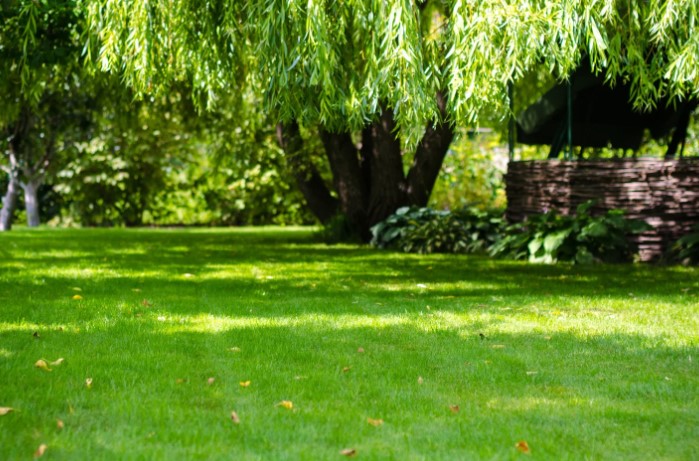
What Happens if You Don’t Scarify Your Lawn?
A lawn that isn’t scarified regularly can suffer from poor health and slow growth. Some common issues include:
- Thick thatch buildup, which blocks water and nutrients from reaching the roots.
- Increased moss growth, as moss thrives in compacted conditions.
- Weaker grass roots, making the lawn more susceptible to drought and disease.
- Uneven growth, resulting in patchy or sparse grass coverage.
Regular scarification ensures your lawn remains lush, aerated, and healthy.
What Are the Benefits of Scarifying in the UK?
Scarification offers numerous benefits for lawns, particularly in the UK, where cool temperatures and frequent rainfall create conditions for moss and thatch buildup.
Key Benefits of Lawn Scarification
- Removes Thatch and Moss – Thatch blocks essential nutrients and water from penetrating the soil. Scarification breaks up this layer, helping the grass access what it needs.
- Improves Aeration and Drainage – Removing surface debris allows better airflow and prevents waterlogging, which is common in UK gardens.
- Encourages Stronger Root Development – When the lawn is free of excess thatch, roots grow deeper, making the grass more resilient to dry conditions and heavy foot traffic.
- Prepares Lawn for Healthy Seasonal Growth – Scarifying in spring encourages fresh grass shoots, while autumn scarification removes summer thatch and prevents moss buildup over winter.
A well-scarified lawn is healthier, more resilient, and visually appealing throughout the year.
When is the Best Time to Scarify a Lawn in the UK? – When To Scarify Lawn?
Timing is essential for successful scarification. The two best seasons for scarifying are spring and autumn, but the approach differs slightly depending on the time of year.
When to Scarify a Lawn in Spring?
Spring scarification is ideal for young and growing lawns because it encourages fresh grass growth after winter. However, it should be done lightly to avoid damaging the grass.
- Best months: Late March to early May.
- Ideal conditions: The grass should be actively growing, and the weather should be mild but not too dry.
- Purpose: To remove light thatch and promote new grass growth.
If scarifying in spring, avoid going too deep, as the lawn needs time to recover before summer.
Learn how and when to prune hebe with our beginners guide.
When to Scarify a Lawn in Autumn?
Autumn is the preferred season for deep scarification because the lawn has more time to recover before winter dormancy.
- Best months: September to early October.
- Ideal conditions: The soil should be damp but not overly wet, and the temperature should be mild.
- Purpose: To remove summer thatch buildup and moss before winter.
Autumn scarification is deeper and more aggressive, as the lawn does not need to withstand heat stress like in summer.
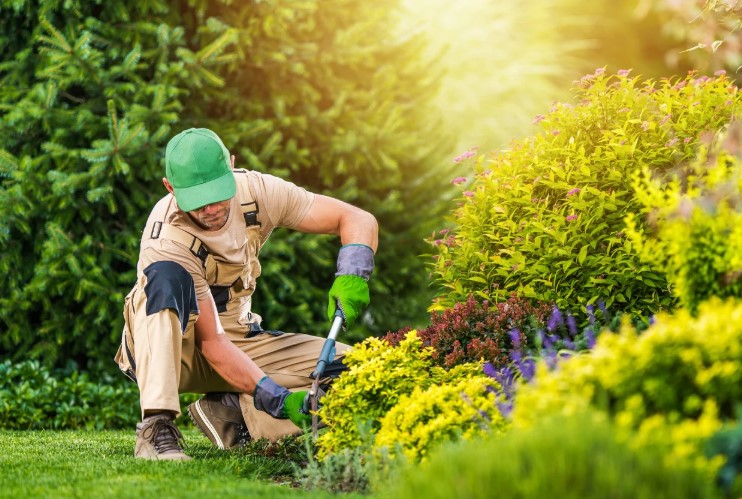
When Not to Scarify Your Lawn?
Scarifying at the wrong time can damage the lawn rather than improve it. Avoid scarification in the following conditions:
- During extreme summer heat – Grass struggles to recover, and the soil dries out quickly.
- In winter or when frost is expected – The cold slows down grass growth, leaving the lawn exposed and weak.
- If the lawn is new (less than a year old) – The roots are still developing and may not withstand scarification.
- After applying weed killers – Chemicals can weaken the grass, making it more vulnerable after scarification. Wait at least three weeks after applying treatments.
Scarifying under these conditions can lead to patchy, weak grass or bare soil, requiring months of recovery.
When Should I Scarify My Lawn for the First Time?
If you have recently established a lawn, you should wait at least 12 months before scarifying. Scarifying too soon can disrupt root development and damage young grass.
- Choose a mild season such as spring or autumn for the first scarification.
- Start with light scarification to test how well the lawn responds.
- Monitor grass recovery before planning deeper scarification.
For newly seeded lawns, gentle scarification with a spring tine rake is best rather than using a mechanical scarifier.
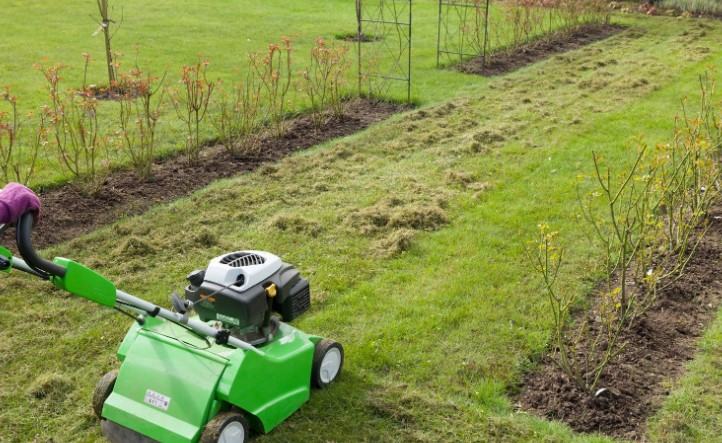
How Often Do I Need to Scarify My Lawn?
Scarification frequency depends on lawn condition and thatch buildup.
| Lawn Condition |
Recommended Scarification Frequency |
| Well-maintained lawn |
Once a year (light scarification) |
| Thatch-prone lawn |
Every 1-2 years (moderate scarification) |
| Heavily thatched lawn |
Every 2-3 years (deep scarification) |
If moss and thatch accumulate quickly, annual light scarification will help maintain a healthy lawn.
Selecting the Right Scarifier for Your Lawn
Choosing the right scarifying tool depends on your lawn size and condition.
| Tool Type |
Best For |
| Spring tine rake |
Small lawns, light scarification |
| Manual scarifier |
Budget-friendly option |
| Electric scarifier |
Medium-sized lawns |
| Petrol scarifier |
Large gardens, deep scarification |
For small gardens, a manual scarifier or rake is sufficient. For larger lawns, an electric or petrol-powered scarifier is more efficient.
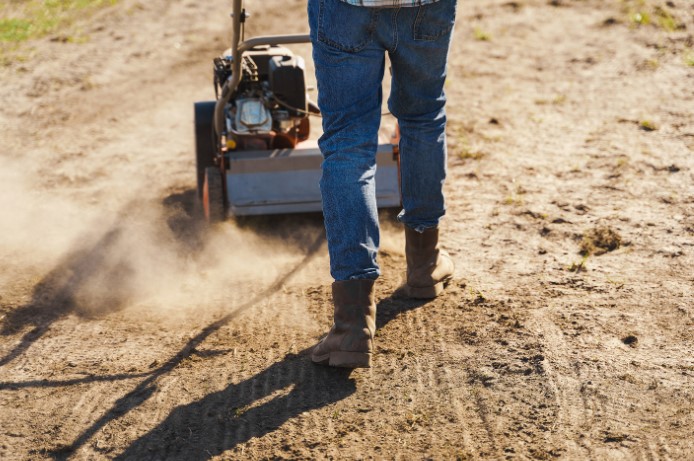
How to Prepare Your Lawn for Scarification?
Before scarifying your lawn, proper preparation is essential to ensure the best results. Without preparation, scarification can shock the grass, leading to uneven growth or even bare patches. Taking a few preparatory steps will help minimise stress on the lawn and promote a quicker recovery.
1. Mow the Grass Short (But Not Too Short)
A day or two before scarification, mow your lawn to a short but safe height—typically around 2.5 to 4 cm. Cutting it too short can expose the roots and make the grass more vulnerable to damage, while leaving it too long can make scarifying less effective.
2. Apply Moss Killer If Needed
If your lawn has a significant moss problem, apply a moss killer two to three weeks before scarifying. This ensures that the moss is fully dead before being removed, reducing the risk of spreading spores. Look for a moss treatment that contains iron sulphate, as it is particularly effective at killing moss while also strengthening the grass.
3. Water Lightly If the Soil Is Dry
Scarifying on dry, compacted soil can cause damage to grass roots. If the ground is too dry, water it lightly a day before to soften the surface. However, avoid overwatering, as excessively wet soil can make scarification too aggressive and cause unnecessary damage.
4. Rake Lightly to Loosen Debris
Before scarifying, use a spring tine rake to loosen the top layer of thatch. This helps the scarifier work more efficiently and prevents excessive pulling on the grass. If the thatch layer is thicker than 1 cm, consider aerating the lawn beforehand to improve oxygen flow to the roots.
How to Scarify Your Lawn Properly?
Once your lawn is prepared, it’s time to scarify correctly. The goal is to remove dead organic material without damaging healthy grass.
The choice of scarifier depends on your lawn size and the level of thatch buildup.
- For small lawns or light scarification, a spring tine rake or manual scarifier is sufficient.
- For medium-sized gardens, an electric scarifier makes the job easier.
- For large gardens with heavy thatch, a petrol-powered scarifier provides deeper penetration and greater efficiency.
Step-by-Step Scarification Process
- Start with a light pass – Adjust the scarifier settings to remove only the top layer of thatch.
- Scarify in multiple directions – First, go in one direction, then pass over again at a right angle to ensure even thatch removal.
- Remove the debris – Rake up and clear out all loosened moss and thatch.
- Overseed if needed – If the lawn looks thin after scarifying, spread grass seed over bare areas to encourage regrowth.
- Water and fertilise – To help the lawn recover, apply a high-phosphorus fertiliser and water the lawn lightly.
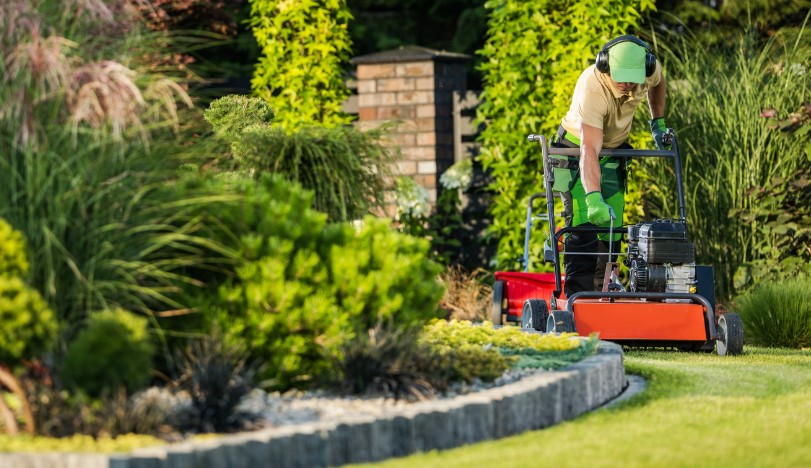
Scarifying Once vs Twice a Year – When Is It Necessary?
- Light scarification can be done once a year (spring or autumn).
- Deep scarification should only be done every 2-3 years, especially if thatch is a major issue.
- Lawns with excessive moss may require twice-yearly scarification, once in spring and again in autumn, to fully control moss growth.
No Grass Left After Scarifying – What to Do Next?
Sometimes, after scarifying, the lawn may appear patchy or even completely bare. This can happen if:
- Too much thatch was removed at once.
- The lawn was weak before scarification.
- Scarification was done at the wrong time.
If you’re left with little to no grass, don’t panic—your lawn can recover with the right steps.
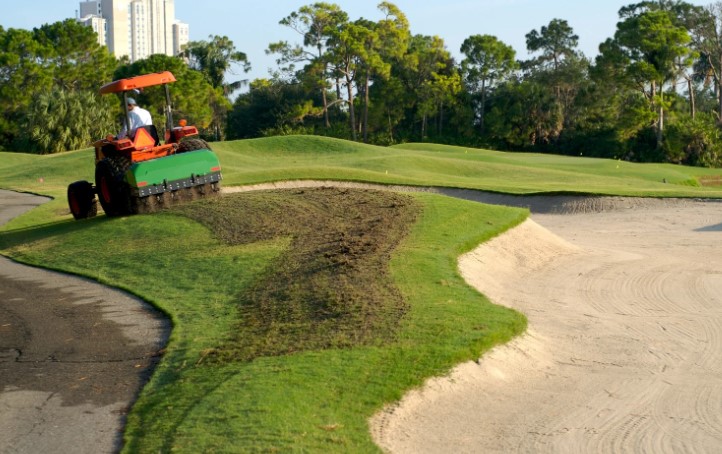
How to Fix a Bare Lawn After Scarification?
1. Overseeding Is Crucial
Spreading high-quality grass seed over the affected areas will fill in bare patches and restore the lawn’s density. Choose a fast-growing seed mix suited to your lawn type.
2. Apply Lawn Feed to Boost Regrowth
Using a high-phosphorus lawn fertiliser will encourage strong root development and speed up the recovery process. Look for a product specifically designed for post-scarification recovery.
3. Keep the Soil Moist (But Avoid Overwatering)
Grass seedlings need consistent moisture to germinate and establish roots. Lightly water the lawn daily for the first two weeks after overseeding, ensuring the soil remains damp but not saturated.
4. Be Patient – Full Recovery Takes 4-6 Weeks
A properly scarified and overseeded lawn takes time to recover. Within four to six weeks, new grass will begin to fill in, and your lawn will look healthier than before.
What to Do After Scarifying Your Lawn?
Once scarification is complete, aftercare is just as important as the process itself. Proper post-care ensures the lawn recovers quickly and grows back thicker and greener.
How to Help Your Lawn Recover Faster?
1. Overseeding to Fill in Bare Patches
After scarification, some areas may look thin. Overseeding ensures new grass fills in these gaps, preventing weeds and moss from taking over.
Use a fertiliser with a high phosphorus content, as this helps strengthen roots and support new grass shoots. Avoid nitrogen-rich fertilisers immediately after scarification, as they promote leaf growth over root development.
3. Watering and Care Tips for the Next Few Weeks
- Water lightly every day for the first two weeks after overseeding.
- Avoid walking on the lawn to prevent soil compaction.
- Mow only at the time, when the new grass reaches around 5-7 cm.


Top Tips and Advice for Lawn Scarification
- Scarify in the right season – Choose spring or autumn for the best recovery.
- Start lightly if it’s your first time – Going too deep can shock the grass.
- Follow up with overseeding and fertilisation – This ensures quicker regrowth.
- Avoid over-scarifying – Removing too much thatch at once weakens the lawn.
Common Mistakes to Avoid When Scarifying a Lawn
1. Scarifying at the Wrong Time
Scarifying in summer or mid-winter can stress the grass, leading to slower recovery or even grass loss.
2. Removing Too Much Thatch at Once
Heavy scarification can leave the lawn bare. If your lawn has thick thatch, consider light scarification over two seasons instead of one deep session.
3. Not Preparing the Lawn Properly
Skipping mowing with lawn mower, moss treatment, or pre-watering can make scarification less effective.
4. Forgetting Aftercare Steps
Not overseeding, fertilising, or watering slows recovery and can leave the lawn vulnerable to weeds and moss.
Conclusion
Scarification is one of the most effective ways to maintain a healthy lawn, but timing and preparation are key.
Recap: Best Time to Scarify
- Spring (March-May) – Light scarification to encourage new growth.
- Autumn (September-October) – Deep scarification to remove moss and thatch.
Key Takeaways
- Prepare your lawn before scarification for better results.
- Choose the right scarifier for your lawn size and condition.
- Always follow up with overseeding and fertilisation for faster recovery.
By following the guide on when to scarify lawn, how & what is the best time to rake UK and with the correct scarification methods, your lawn will grow back thicker, healthier, and greener, ensuring a beautiful garden all year round.

by Kanimozhi BV | Feb 27, 2025 | Garden, Exterior
Mushrooms popping up in your lawn can be frustrating, especially when you’re trying to maintain a healthy, green garden. While mushrooms are a natural part of the ecosystem, they can sometimes indicate underlying lawn issues.
Fortunately, there are safe and effective ways on how do you kill mushrooms without killing grass. In this guide, I’ll explain why mushrooms grow in your lawn, how to remove them safely, and how to prevent them from coming back.
Why Do Mushrooms Grow in Lawns?
What Causes Mushrooms to Appear in Grass?
Mushrooms thrive in specific conditions, and if they’re showing up in your lawn, it could be due to:
- Excess moisture – Overwatering or heavy rainfall creates a damp environment perfect for fungi.
- Decaying organic matter – Mushrooms feed on decomposing leaves, grass clippings, and tree roots.
- Shade and poor airflow – Mushrooms prefer cool, shaded areas with little sunlight.
- Compacted soil – Poor drainage encourages fungal growth.
Are Mushrooms in Your Lawn Harmful?
Most lawn mushrooms are harmless, but some species can be toxic to pets and children. If you’re unsure about the type of mushroom growing in your garden, it’s best to remove them as a precaution.
How to Remove Mushrooms Without Killing Grass?
Mushrooms can be tricky to get rid of, but with the right approach, you can eliminate them while keeping your lawn healthy.
Manual Removal: The Simplest Method
One of the quickest ways to get rid of mushrooms is by removing them by hand. Follow these steps:
- Wear gloves to avoid contact with potentially toxic fungi.
- Pull mushrooms from the base to remove them completely.
- Place them in a sealed bag to prevent spores from spreading.
- Dispose of them in the bin (not in compost, as spores may survive).
- Wash your hands and tools after handling mushrooms.
Tip: Avoid mowing over mushrooms, as this can spread spores and lead to more fungal growth.
Using Natural Remedies to Kill Mushrooms
If you want to kill mushrooms without chemicals, try these safe alternatives:
Baking Soda Solution
Baking soda helps neutralize the acidic soil conditions that mushrooms love.
- Mix 2 tablespoons of baking soda and 1 gallon of water together.
- Pour the solution directly onto mushroom clusters.
- Repeat every few days until the mushrooms disappear.
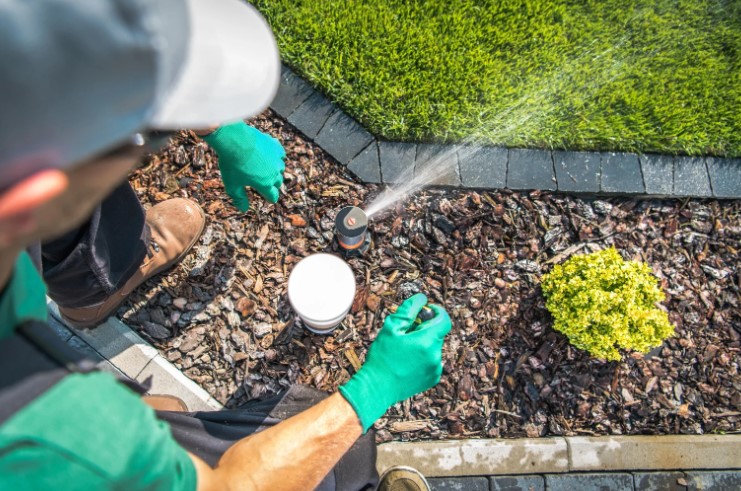
Vinegar Spray (Use with Caution!)
White vinegar can kill mushrooms, but it must be used carefully to avoid damaging the grass.
- Mix 1 part vinegar with 4 parts water.
- Use a spray bottle to lightly mist the mushrooms.
- Be careful not to overspray, as vinegar can kill grass.
Dish Soap and Water
A mild and effective way to stop mushrooms from regrowing.
- Mix a few drops of dish soap with a litre of water.
- Pour the solution into the soil around the mushrooms.
- This helps break down fungi at the root level.
Can You Use Boiling Water to Kill Mushrooms?
Yes, boiling water is a chemical-free way to kill mushrooms. However, it works best for small clusters and should be used sparingly to avoid damaging grass.
- Carefully pour boiling water directly onto mushrooms.
- This method kills fungi instantly but may affect nearby plants if overused.
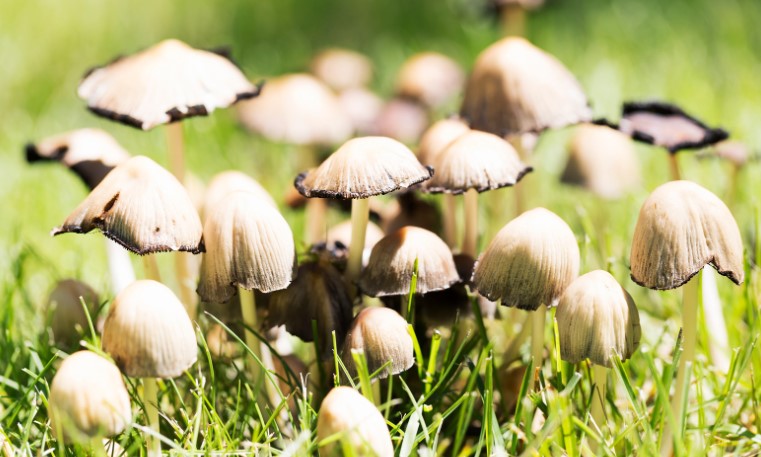
Using Fertilisers to Reduce Fungal Growth
A nitrogen-rich fertiliser can help speed up the decomposition of organic matter in the soil, reducing mushroom growth.
- Apply a high-nitrogen fertiliser which helps break down fungi.
- Use compost to improve soil balance and prevent future outbreaks.
How to Remove Mushrooms Without Chemicals?
If you want a completely organic approach, follow these steps:
- Handpick mushrooms regularly.
- Use natural remedies like cornmeal and neem oil.
- Keep the lawn dry, well-aerated, and free of organic debris.
Preventing Mushrooms from Growing Again
Removing mushrooms is only part of the solution. To stop them from coming back, you need to improve lawn conditions.
Improve Lawn Drainage
Since mushrooms thrive in damp environments, improving drainage is essential.
- Aerate the soil to prevent water from pooling.
- Add sand or organic matter to improve drainage.
Reduce Shade and Increase Airflow
Mushrooms grow best in cool, shady areas. Increase sunlight exposure by:
Proper Lawn Maintenance to Prevent Fungi
A healthy lawn is less likely to develop mushrooms. Follow these steps:
- Mow regularly to keep the grass at an optimal height.
- Remove fallen leaves and grass clippings to prevent organic build-up.
- Avoid overwatering – water your lawn only when necessary.
Safe Fungicides for Mushroom Control
If mushrooms persist despite natural methods, a fungicide may be necessary.
Organic vs. Chemical Fungicides
| Type |
Benefits |
Considerations |
| Organic (Neem oil, cornmeal, compost tea) |
Safe for pets and wildlife |
May take longer to work |
| Chemical (Lawn-safe fungicides) |
Fast-acting, effective |
Use sparingly to avoid harming the grass |
When to Use Fungicides?
- If mushrooms keep returning despite good lawn maintenance.
- Apply in the early morning or late evening for best results.
- Always follow manufacturer instructions to avoid harming the lawn.
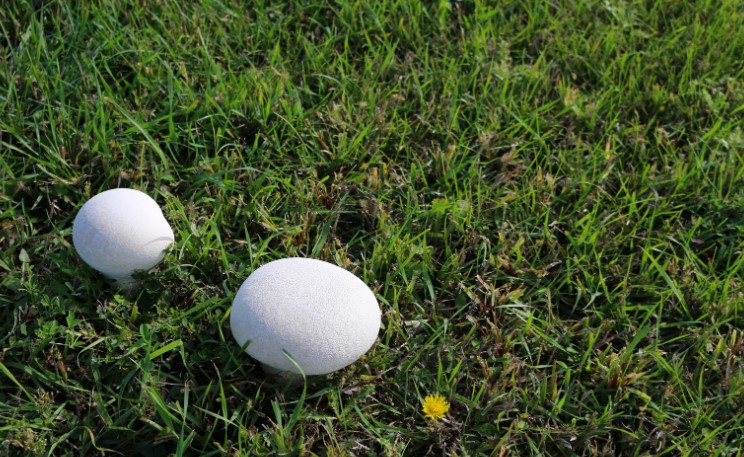
Common Mistakes to Avoid When Removing Mushrooms
- Overwatering the lawn – creates the perfect environment for fungi.
- Ignoring spores – failing to dispose of mushrooms properly leads to regrowth.
- Using harsh chemicals – some fungicides can kill grass along with mushrooms.
Conclusion
Mushrooms in your lawn are a sign of moist, organic-rich soil. While they aren’t always harmful, they can be a nuisance.
By following this guide on how do you kill mushrooms without killing grass and by using safe removal methods like manual picking, natural remedies, and proper lawn care, you can eliminate mushrooms without damaging your grass.
Key Takeaways:
- Remove mushrooms promptly to prevent spore spread.
- Use baking soda, vinegar, or dish soap for a natural solution.
- Improve drainage and reduce shade to prevent regrowth.
- Apply fungicides only as a last resort.
With these effective, grass-safe solutions, your lawn will stay healthy, green, and mushroom-free!
FAQs About Killing Mushrooms Without Harming Grass
1. Can I use bleach to kill mushrooms?
No, bleach can damage soil, kill grass, and harm beneficial microbes.
2. Will mowing over mushrooms spread them?
Yes, mowing the lawn releases spores into the air, leading to more mushrooms.
3. How long does it take to remove mushrooms permanently?
It depends on the method used and lawn conditions. Preventative care is key.

























